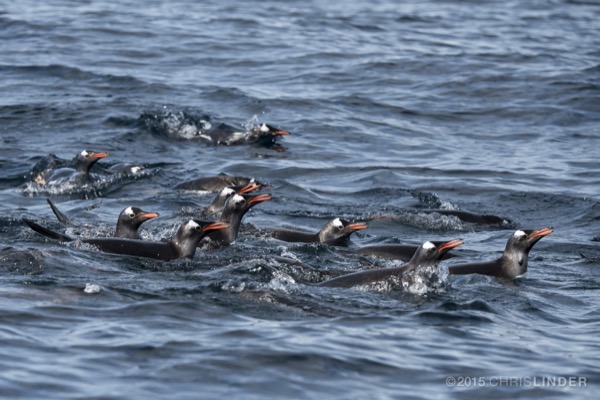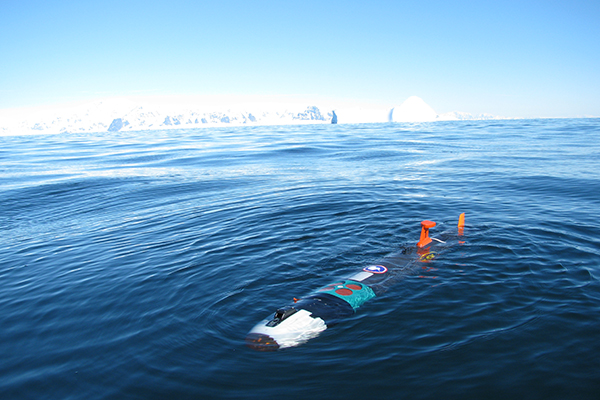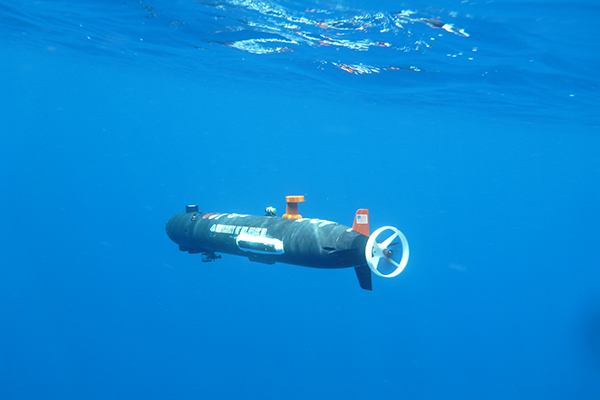UD study seeks to better understand foraging competition between Adelie, gentoo penguins
Jan. 6, 2016--For hundreds of years, Adélie penguins
have been breeding in the West Antarctic Peninsula (WAP), which has
recently become one of the most rapidly warming areas on Earth.
At Palmer Station, a U.S. research base located along the WAP,
scientists have been monitoring Adélie penguin population declines for
decades. There were 15,000 breeding pairs of Adélie penguins in 1975;
but today only a few thousand pairs are left.
Now, in a
study reported in the Nature publication Scientific Reports,
University of Delaware oceanographers consider whether Adélie penguins
and gentoo penguins — newcomers to the Palmer Station region over the
last two decades — may be competing for the same food resources and
whether this might exacerbate the Adélie population decline.
An ecological theory called the competitive exclusion principle, also
known as Gause’s law, states that “two species that compete for the
exact same resources cannot stably coexist.”
“So we set out to explore whether the Adélies and gentoos were eating out of the same lunch box, so to speak,” explained
Megan Cimino, a doctoral candidate in UD’s
College of Earth, Ocean, and Environment and the paper’s lead author.
Co-authors on the paper, “Climate-Driven Sympatry May Not Lead to
Foraging Competition Between Cogeneric Top-Predators,” include UD’s
Mark A. Moline, director of the
School of Marine Science and Policy, and
Matthew J. Oliver,
Patricia and Charles Robertson Professor of Marine Science and Policy;
and William R. Fraser and Donna L. Patterson-Fraser from Polar Ocean’s
Research Group.
Underwater robot views the ocean like a penguin
To test whether the species were competing, the researcher’s tagged
penguins with small satellite transmitters and depth recorders to track
where the penguins went and how deep they were diving. The tags were
attached to a different penguin every three days over the month-long
2011 study which took place during the chick-feeding phase of the
breeding cycle when adults are feeding chicks and the parental foraging
ranges of both species overlap. Each penguin completed a few foraging
trips and hundreds to thousands of dives while tagged.
Additionally, the research team used an autonomous underwater vehicle
(AUV) called a REMUS to sample the water where the penguins were
foraging, something few researchers have done before. The REMUS provided
important measurements on temperature, salinity and how much light was
in the water (important for visual predators like penguins).
It also measured the amount of phytoplankton and krill, the main food
source for both penguin species, present in the water, systematically
allowing the researchers to measure multiple levels of the food chain in
the same study, from phytoplankton to krill to penguins.
“Gaining an understanding of where krill are in relation to their
food, and where penguins are in relation to their food was an important
part of the study,” Cimino said. “Without the REMUS — which can swim at
about the same speed and dive almost as deep as a penguin — we would not
know what’s going on in the waters where the penguins are, we would
only know that the penguins were there.”
An analysis of the data on thousands of foraging dives revealed that
while the Adélie and gentoo penguins generally foraged in different
areas, there was a small area of overlap between the two populations.
Interestingly, when the species overlapped, the gentoos shifted behavior
and foraged at deeper depths — nearly 35 percent — below the Adélie
penguins.
Both penguin species are capable of foraging as deep as 150 meters
below the ocean surface, yet over the study period, the Adélies foraged
in the upper 50 meters of the water and they didn’t change their
behavior at all when their foraging area overlapped with the gentoos.
The gentoos, however, often foraged as deep as 150 meters when in
overlapping areas. The researchers theorize this may be a strategy to
limit competition.
“It was unexpected to see the Adélies foraging much shallower than
the gentoos when we know they are capable of deeper dives,” Cimino said.
Furthermore, the fact that both penguin species were provisioning
chicks during the satellite tracking implied that the adults were
returning to the nest with enough food, further suggesting that
competition was not limiting food resources.
Krill, the penguin’s main food source, are an important prey in the
Southern Ocean because they aggregate in large groups and have high
nutritional value. The researchers used the REMUS to test whether krill
were affiliated with any specific water properties. The team found that
krill were mostly associated with areas where the water became darker at
a shallower depth and the bulk of phytoplankton, it’s food source, was
located deeper in the water.
Since there are few places to hide in the open ocean except in
darkness, this led the research team to determine that the krill were
selecting for areas where they could eat, but also avoid being eaten by
visual predators, such as penguins.
“The novel aspect of the study was that the environmental sampling
done by the robot was informed by the location of the penguins. By doing
this, we could couple the behavior of these two species with the
distribution of their prey and make distinctions that were not possible
beforehand,” explained Moline.
More work to be done
While recent theories have suggested that increased competition for
krill is a main driver of Adélie penguin population declines, the
oceanographers suspect the Adélie declines along the WAP may be more
likely due to direct and indirect climate impacts on their life
histories.
Last year UD researchers and colleagues reported a
connection between local weather conditions and the weight of Adélie penguin chicks.
Previous research studies near Palmer Station demonstrated how climate
and weather influence penguin breeding habits, the marine foraging
environment and foraging trip duration.
If the WAP climate continues to warm, sea ice extent and coverage
duration will continue to decrease, potentially altering the food web
and raising questions about what effect changes in winter habitat will
have on the species’ survival, Cimino said.
Adélie penguins are migratory and leave their breeding colony in
winter and stay out at sea. Gentoo penguins are non-migratory and remain
at the breeding colony all winter.
“It is cool to see that two species can exist in very close quarters —
less than 20 kilometers apart — and have different foraging habitats.
But if their winter habitats are changing as well, for better or worse,
it will likely have a direct effect on their population and how many
penguins come back to breed each season,” Cimino said.
This work was funded by the National Science Foundation and by the NASA Biodiversity Program.
Article by Karen B. Roberts
Photos courtesy of Chris Linder and the University of Delaware
source



















